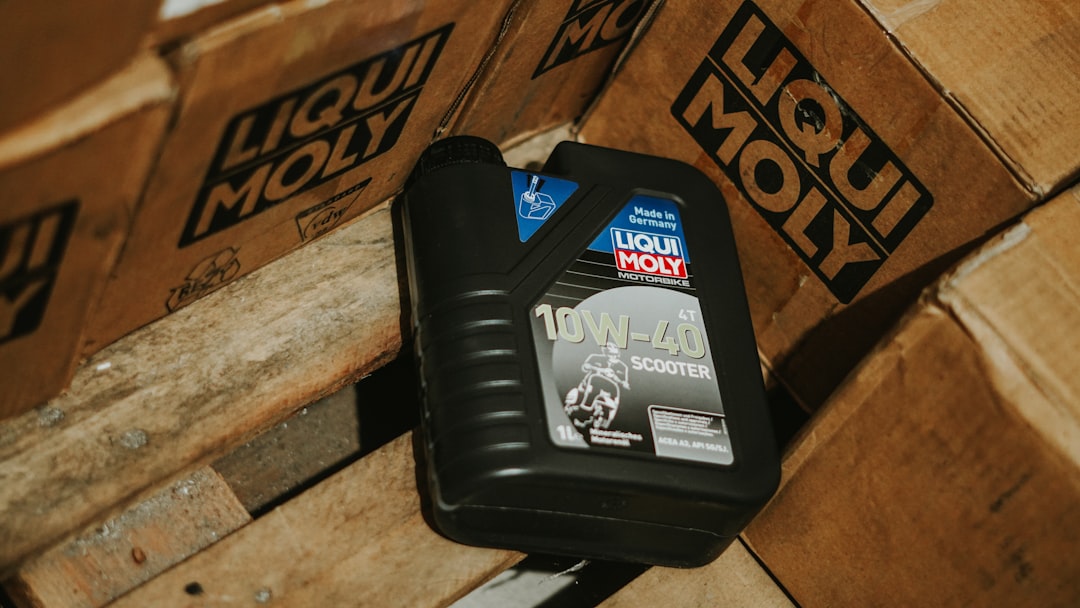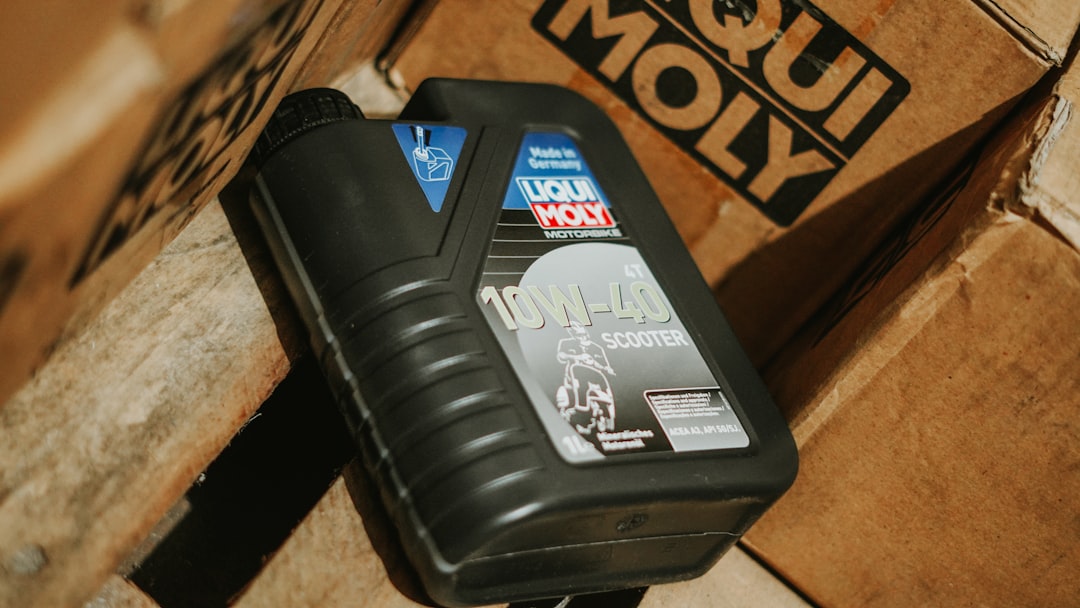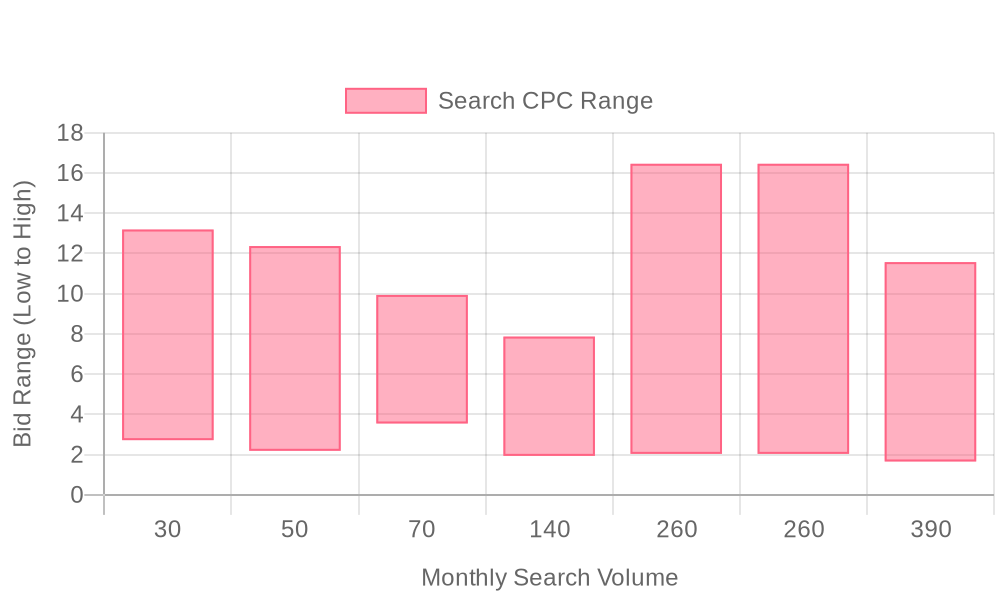
Supercharge your lead generation with a FREE Google Ads audit - no strings attached! See how you can generate more and higher quality leads
Get My Free Google Ads AuditFree consultation

No commitment
Supercharge your lead generation with a FREE LinkedIn Ads audit - no strings attached! See how you can generate more and higher quality leads
Get My Free Google Ads AuditFree consultation

No commitment
Supercharge your lead generation with a FREE Meta Ads audit - no strings attached! See how you can generate more and higher quality leads
Get My Free Google Ads AuditGet My Free LinkedIn Ads AuditGet My Free Meta Ads AuditFree consultation

No commitment
Supercharge your lead generation with a FREE Google Ads audit - no strings attached! See how you can generate more and higher quality leads
Get My Free Google Ads AuditFree consultation

No commitment
For lubricating oil suppliers navigating today's digital landscape, Google Ads offers a strategic advantage that bridges the gap between online visibility and direct sales engagement. It empowers suppliers to target decision-makers exactly when they seek specialized lubricants, enhancing brand recognition and customer acquisition. However, many suppliers face challenges like missing high-value prospects because they aren’t tracked in their CRM, leading to lost opportunities. Modern solutions allow you to identify these prospects and ensure your ad spend targets genuine decision-makers with real intent rather than cold, unqualified traffic. In the competitive world of lubricating oil distribution, harnessing the precise targeting and measurable ROI of Google Ads can transform your marketing approach, reinforcing your digital presence while complementing offline methods like trade shows and direct outreach. With the right configuration, Google Ads becomes an essential tool in effectively capturing leads, tracking conversions, and driving business growth.

Modern lubricating oil suppliers face a rapidly evolving buyer landscape. Digital marketing for lubricating oil and online advertising for lubricants deliver targeted reach to decision-makers with complex technical needs and strict purchasing cycles.
Google Ads for lubricating oil suppliers enables measurable, data-driven lead generation. High-performing campaigns align granular keyword targeting, real-time intent signals, and conversion-focused landing pages to maximize every marketing dollar.
Integrating Google Ads with advanced lead identification techniques allows marketers to go beyond anonymous website traffic. By pinpointing visiting companies and their level of purchase intent, you can prioritize high-value accounts and personalize outreach through coordinated sales and marketing efforts. For marketers seeking automation and scale, the Google Ads API keyword planning guide provides technical resources for generating keyword ideas.
Real-time behavior tracking lets you shift budget instantly to audiences with the highest likelihood to convert. CRM and ad sync ensure that enriched lead and account data flows seamlessly between Google Ads and your sales tools, so every dollar spent is tracked to true business outcomes.
This step-by-step framework will guide you through building, optimizing, and scaling Google Ads campaigns tailored for lubricating oil suppliers. Each phase demonstrates how unified data and precise targeting can accelerate lead acquisition and drive measurable ROI in a fiercely competitive market. Ready to put these strategies into action? Get started for free with Sona.

Digital-first buyers in the lubricating oil supply chain expect timely, relevant engagement at the moment they search for solutions. By leveraging Google Ads, suppliers can appear precisely when procurement managers and technical decision-makers express intent, capturing demand before competitors intervene. For suppliers aiming to identify account-level engagement even before a form is filled, Sona Identification enables turning anonymous website traffic into actionable sales opportunities.
Late lead capture has traditionally hindered lubricating oil suppliers, resulting in lost deals and fragmented pipelines. With advanced ad platforms, marketers now identify and engage key accounts using real-time audience segmentation, helping sales teams focus outreach on the most engaged prospects.
Google Ads delivers measurable visibility in high-value industrial and automotive segments, enabling rapid response to shifts in project timelines or supply chain disruptions. Marketers can access technical documentation for generating keyword ideas to automate and scale their keyword research for campaign optimization.
Modern platforms further accelerate performance by syncing CRM and enriched audience data directly into the ad ecosystem. This approach creates dynamic audiences that refresh as leads move through the funnel, empowering teams to serve personalized, context-driven ads that convert at higher rates. Ready to see results? Get started for free with Sona.


Every competitive lubricating oil supplier can unlock incremental growth by focusing on specialized search demand and evolving digital buyer behavior. Identifying untapped segments within Google Ads for lubricating oil suppliers is essential for capturing quality leads and increasing sales pipeline velocity. For a deeper dive into B2B digital marketing tactics, visit the Sona blog.
By combining these advanced targeting and placement strategies, lubricating oil suppliers can maximize their share of high-value demand while systematically outmaneuvering competitors in both search and discovery channels. To put these tactics into practice, get started for free with Sona and unlock data-driven growth opportunities.

Effective audience segmentation is the foundation of high-performing digital marketing for lubricating oil suppliers. Precise segmentation not only increases ad relevance but also ensures your marketing spend is concentrated on prospects with the highest likelihood to convert. For more actionable strategies, browse the Sona B2B marketing blog.
Applying this rigorous approach to audience segmentation ensures that every aspect of your online advertising for lubricants—from targeting and creative to conversion tracking—aligns with both your growth strategy and your customers’ buying behaviors. This discipline is essential for any supplier aiming to lead in a competitive, data-driven market. Ready to elevate your segmentation strategy? Get started for free with Sona.

| Industry | Keyword | Monthly Search Volume | Competition Level | Low Bid | High Bid |
| Lubricating Oil Suppliers | bulk engine oil suppliers near me | 30 | HIGH | 2.72 | 13.19 |
| Lubricating Oil Suppliers | bulk hydraulic oil suppliers near me | 50 | MEDIUM | 2.19 | 12.37 |
| Lubricating Oil Suppliers | lubricating oil suppliers | 70 | LOW | 3.55 | 9.94 |
| Lubricating Oil Suppliers | hydraulic oil suppliers near me | 140 | MEDIUM | 1.94 | 7.87 |
| Lubricating Oil Suppliers | bulk engine oil suppliers | 260 | MEDIUM | 2.04 | 16.46 |
| Lubricating Oil Suppliers | bulk motor oil suppliers | 260 | MEDIUM | 2.04 | 16.46 |
| Lubricating Oil Suppliers | engine oil suppliers | 390 | LOW | 1.66 | 11.57 |
Selecting the right keywords is the foundation of Google Ads success for lubricating oil suppliers. The most effective approach involves combining high-commercial-intent queries with data-driven segmentation to reach decision-makers in procurement, fleet management, and manufacturing operations.
To streamline your Google Ads keyword strategy, get started for free with Sona.
Precision in keyword targeting is essential for lubricating oil suppliers aiming to generate qualified leads. Organize keywords into tightly focused clusters based on core services—such as bulk lubricants, industrial oils, or specialty fluids—and further refine by geography or industry verticals. Segmenting by intent, including transactional and research-driven search terms, ensures you capture decision-makers at each buying stage. Negative keywords should be actively managed to block irrelevant clicks, such as terms related to DIY or academic research, thereby safeguarding budget for high-value prospects. For advanced automation and scalability in keyword research, refer to the Google Ads API documentation on keyword ideas.
Integrating visitor identification into your keyword approach delivers significantly greater visibility into which companies are engaging with your ads. Real-time enrichment transforms anonymous clicks into actionable profiles, allowing you to prioritize high-value accounts in industrial sectors. This enables you to shift spend proactively toward in-market prospects, improving both cost efficiency and conversion rates. Dynamic keyword lists can then be updated as new segments show intent, keeping your campaigns agile and relevant to shifting demand.
Get started for free with Sona.
Effective ad copy for lubricating oil suppliers addresses the distinct pain points of your target audiences, whether they are plant managers seeking rapid delivery or procurement officers focused on regulatory compliance. Messaging should emphasize trust through industry certifications, urgency with limited-time offers, and differentiation by highlighting proprietary formulations or custom solutions. Customizing headlines and descriptions for each audience segment increases engagement and click-through rates, especially when paired with callouts such as “API-certified lubricants” or “24/7 fleet supply.” Learn to optimize PPC ad copy for industrial businesses for more effective B2B lead generation.
Using CRM and behavioral data to inform your messaging ensures ads remain relevant as prospects progress through the funnel. When your ad platform syncs directly with enriched lead data, creative can be adjusted automatically—tailoring offers and value propositions to each stage of the buying journey. This level of personalization boosts both initial response and downstream conversion, especially in B2B environments where multiple stakeholders require targeted reassurance before moving forward.
A seamless experience from ad click to landing page is non-negotiable for lubricating oil suppliers competing in a technical, trust-driven space. Every landing page should align tightly with ad messaging, reinforcing product claims with technical documentation, certifications, or customer testimonials. Clearly defined calls-to-action—such as RFQ forms, product selectors, or instant chat—guide visitors toward their next step, reducing friction and improving lead quality. For reference, a lubricant glossary can help enhance page content and educate prospects on industry terminology.
Dynamic landing page content, driven by real-time audience data, ensures each visitor sees case studies and product attributes most relevant to their segment or industry. When CRM and ad data sync in real time, landing pages can adapt to known visitors, pre-filling forms or surfacing tailored offers based on account status. This personalized path reduces drop-off, shortens sales cycles, and increases the likelihood of conversion for both new and returning stakeholders.
Continuous campaign optimization is critical for maximizing ROI in Google Ads for lubricating oil suppliers. Move beyond basic reporting by integrating conversion data from online and offline channels, enabling a more accurate assessment of which keywords, creatives, and audiences drive actual revenue. Smart bidding strategies, informed by enriched account data, allocate budget dynamically to the most promising segments and times of day, ensuring top-performing campaigns maintain momentum. Explore offline attribution strategies to further enhance your measurement.
Real-time audience updates allow you to retarget engaged accounts with relevant messaging or exclude customers already in active sales cycles, keeping spend focused on new opportunities. Advanced tracking connects marketing and sales workflows, attributing revenue with precision and supporting closed-loop reporting. This holistic, data-driven approach empowers revenue teams to continually refine strategies, respond to market shifts, and scale what works in digital marketing for lubricating oil suppliers.
Expanding your lubricating oil supplier presence requires a coordinated approach that blends digital precision with industry expertise. By focusing on timely and relevant engagements, you ensure your marketing efforts are always connected to genuine customer needs. Explore more digital marketing strategies in our B2B marketing blog.
By strategically utilizing Google Ads for lubricating oil suppliers, you can capture high-intent leads, optimize spend, and achieve a sustained competitive edge. Data-driven keyword targeting, advanced segmentation, and continuous performance analysis ensure your online advertising for lubricants stays relevant and effective, while integration with broader marketing initiatives boosts ROI and positions your brand as a market leader. To streamline your lead generation and campaign execution, get started for free with Sona.
As we wrap up our exploration of effective Google Ads strategies for lubricating oil suppliers, it's clear that leveraging the right digital marketing tools can significantly enhance your business's visibility and customer engagement. In an industry where differentiation is key, aligning your advertising approach with targeted strategies ensures that your brand not only reaches but resonates with the right audience.
Throughout this article, we've tackled the unique challenges faced by lubricating oil suppliers in the competitive digital landscape. From identifying specific keywords that resonate with potential customers to crafting compelling ad copy that drives clicks, the right strategies can transform how your business engages online. By focusing on these key elements, you are better positioned to capture the attention of your target market and convert interest into actionable business outcomes.
Imagine the potential growth and transformation your business can achieve by implementing these insights. With a strategic approach to Google Ads, you can elevate your market presence and build lasting connections with your customers. Embrace these strategies to unlock new opportunities and propel your business forward in the digital realm.
To take your marketing efforts to the next level and experience the benefits firsthand, start for free to explore our platform's capabilities today.
Best practices include using precise targeting, aligning ad campaigns with buyer intent, optimizing landing pages for conversions, and integrating CRM data to track high-value prospects and ensure effective ad spend.
Suppliers can target their audience by using search campaigns for high-intent buyers, display ads for brand visibility, remarketing to re-engage visitors, and audience segmentation based on industry and purchase intent.
The budget should be dynamically allocated based on real-time data and intent signals, focusing on high-intent audiences and optimizing spend using smart bidding strategies.
Focus on high-commercial-intent keywords such as 'bulk lubricating oil distributor' and 'API certified hydraulic oil,' while using negative keywords to filter out non-commercial traffic.
Success can be measured by tracking conversions through CRM integration, assessing ROI with real-time data, and using advanced tracking to attribute revenue to specific keywords and audience segments.
Join results-focused teams combining Sona Platform automation with advanced Google Ads strategies to scale lead generation

Connect your existing CRM

Free Account Enrichment

No setup fees
No commitment required

Free consultation

Get a custom Google Ads roadmap for your business
Join results-focused teams combining Sona Platform automation with advanced Meta Ads strategies to scale lead generation

Connect your existing CRM

Free Account Enrichment

No setup fees
No commitment required

Free consultation

Get a custom Google Ads roadmap for your business
Join results-focused teams combining Sona Platform automation with advanced LinkedIn Ads strategies to scale lead generation

Connect your existing CRM

Free Account Enrichment

No setup fees
No commitment required

Free consultation

Get a custom Google Ads roadmap for your business
Join results-focused teams using Sona Platform automation to activate unified sales and marketing data, maximize ROI on marketing investments, and drive measurable growth

Connect your existing CRM

Free Account Enrichment

No setup fees
No commitment required

Free consultation

Get a custom Google Ads roadmap for your business
Over 500+ auto detailing businesses trust our platform to grow their revenue
Join results-focused teams using Sona Platform automation to activate unified sales and marketing data, maximize ROI on marketing investments, and drive measurable growth

Connect your existing CRM

Free Account Enrichment

No setup fees
No commitment required

Free consultation

Get a custom Google Ads roadmap for your business
Over 500+ auto detailing businesses trust our platform to grow their revenue
Join results-focused teams using Sona Platform automation to activate unified sales and marketing data, maximize ROI on marketing investments, and drive measurable growth

Connect your existing CRM

Free Account Enrichment

No setup fees
No commitment required

Free consultation

Get a custom Google Ads roadmap for your business
Over 500+ auto detailing businesses trust our platform to grow their revenue
Our team of experts can implement your Google Ads campaigns, then show you how Sona helps you manage exceptional campaign performance and sales.
Schedule your FREE 15-minute strategy sessionOur team of experts can implement your Meta Ads campaigns, then show you how Sona helps you manage exceptional campaign performance and sales.
Schedule your FREE 15-minute strategy sessionOur team of experts can implement your LinkedIn Ads campaigns, then show you how Sona helps you manage exceptional campaign performance and sales.
Schedule your FREE 15-minute strategy sessionOur team of experts can help improve your demand generation strategy, and can show you how advanced attribution and data activation can help you realize more opportunities and improve sales performance.
Schedule your FREE 30-minute strategy sessionOur team of experts can help improve your demand generation strategy, and can show you how advanced attribution and data activation can help you realize more opportunities and improve sales performance.
Schedule your FREE 30-minute strategy sessionOur team of experts can help improve your demand generation strategy, and can show you how advanced attribution and data activation can help you realize more opportunities and improve sales performance.
Schedule your FREE 30-minute strategy sessionOur team of experts can help improve your demand generation strategy, and can show you how advanced attribution and data activation can help you realize more opportunities and improve sales performance.
Schedule your FREE 30-minute strategy session





Launch campaigns that generate qualified leads in 30 days or less.
